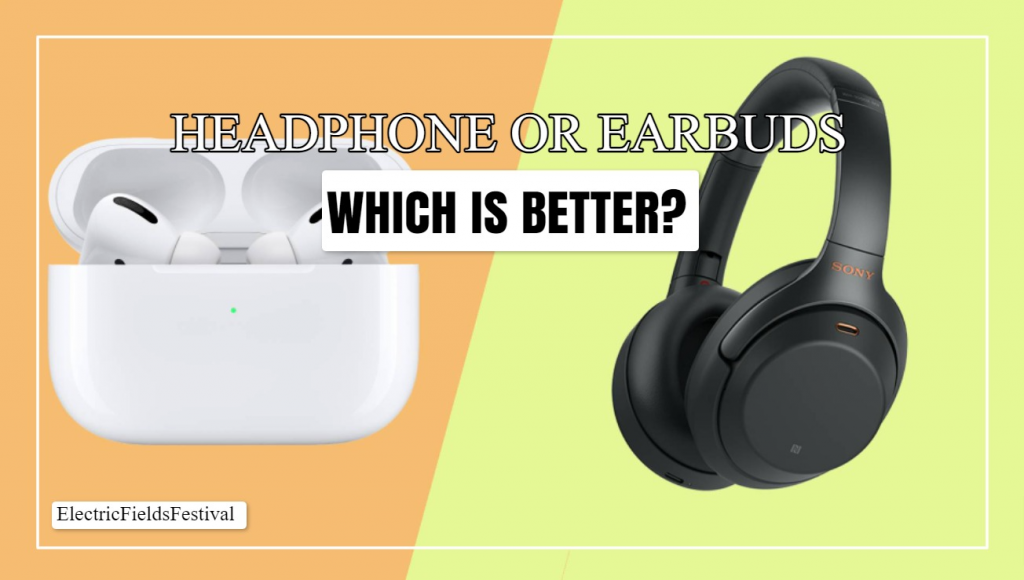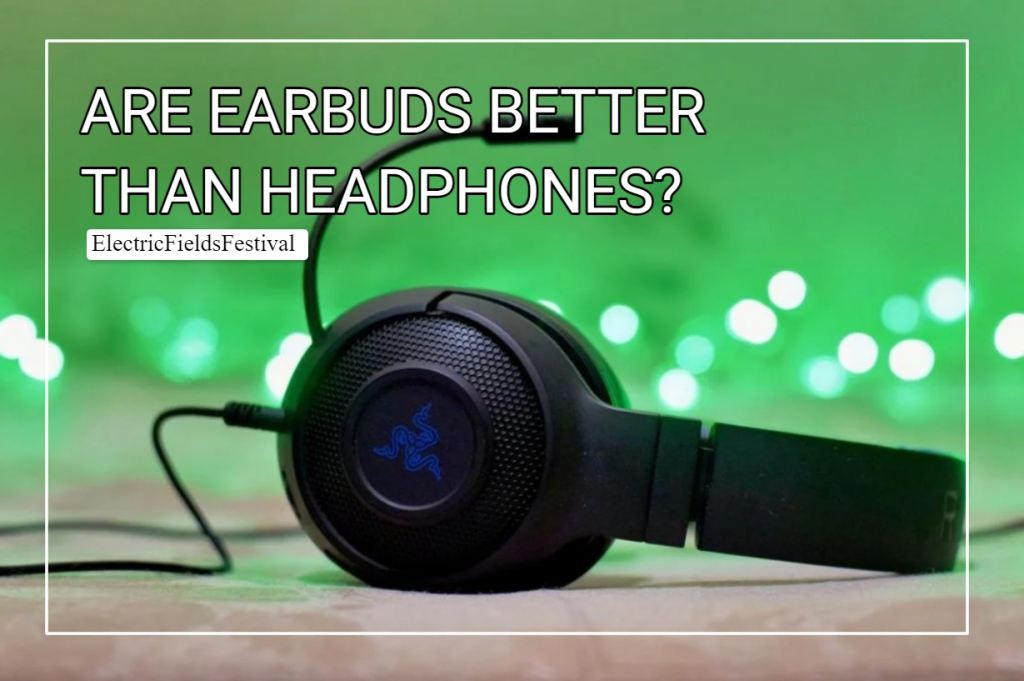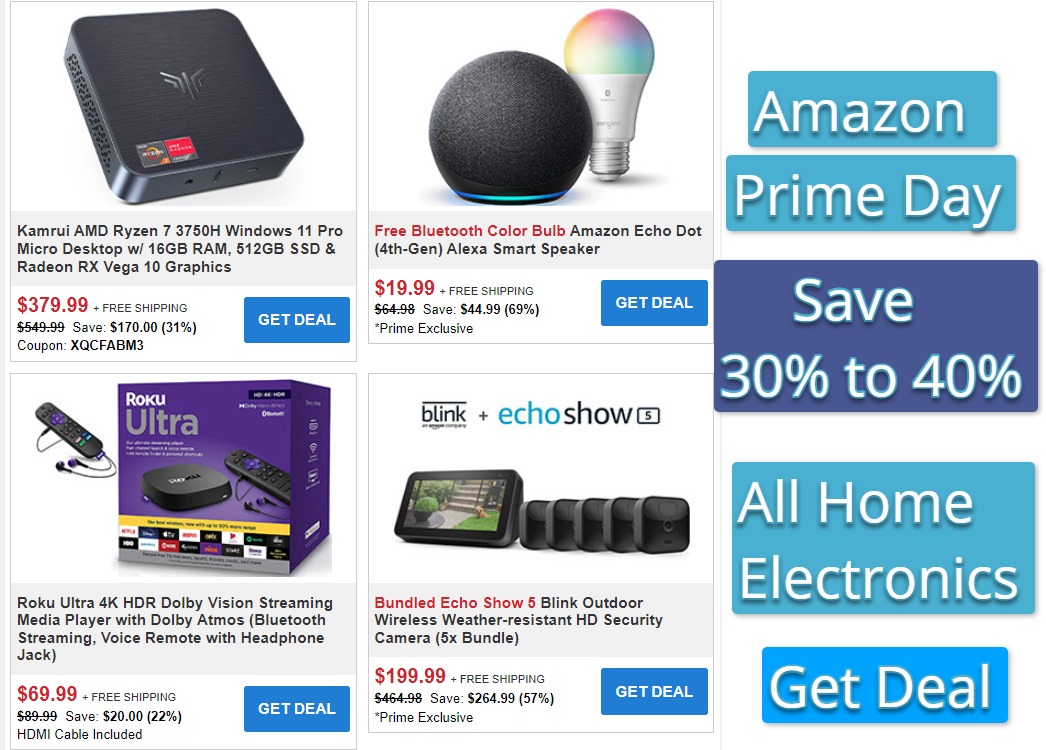If you're looking for something to satisfy your audio needs, you might be wondering whether headphones or earbuds are the best option for you.
What's the difference, after all? Are headphones better than earbuds?
Aside from deciding between earbuds and headphones, it's easy to become overwhelmed by the numerous brands available and what they have to offer in terms of features and design.
In this article, we’re going to break down what headphones and earbuds are, as well as the differences between them to help you make an informed decision.

Are Headphones Better Than Earbuds?
Earbuds are usually more compact, less expensive, and better for workouts than their canned counterparts. On the other hand, headphones often provide the best audio quality and noise cancellation of the two, as well as significantly longer battery life — as long as you're willing to pay the extra premium.
WHAT ARE HEADPHONES?
Headphones are made up of two small loudspeakers linked by a band. They are worn on top of the head, either on or over the ears. Their purpose is to allow a single person to privately listen to an audio source.
Each pair of headphones may appear different, but they are all made of the same materials. Headphones are typically available in two configurations: on-ear or over-ear, and open-back or closed-back.
1. Over-ear Headphones
Over-ear headphones (also known as circumaural headphones) have large ear pads that surround rather than rest on the ears. They also frequently include extra padding on the headband for comfort.
However, due to their size and weight, they can be quite inconvenient when traveling. These headphones are good for noise isolation because they seal against the head.
2. On-ear Headphones
On-ear headphones (also known as supra-aural headphones) are intended to be worn on your ears rather than around them. On-ear headphones are generally lighter than over-ear headphones due to their small design.
Long periods of listening, on the other hand, may cause discomfort. This is due to the pressure exerted by the headphones on your ears.
Because they rest on the ears, they are more susceptible to outside sound intrusion. This also means that loud audio can escape from the headphones.
3. Bone Conduction Headphones
These one-of-a-kind headphones bypass the outer ear entirely, sending vibrations (sound waves) directly to the middle ear. Your temporal bones are vibrated by bone conduction transducers. Your middle ear and cochlea then pick up on vibrations.
This type of headphone is ideal for people who have specific hearing problems or who want complete awareness.
Because transducers do not go inside your ears, you can hear everything around you. While this is great for safety, don't expect them to have great sound quality. Fine details are easily lost, and the bass is neither deep nor powerful.
CLOSED-BACK VS OPEN-BACK HEADPHONES
Along with deciding between on-ear and over-ear headphones, you must also decide whether you want closed-back or open-back headphones. Let's take a quick look at the distinctions between the two.
- Closed-back headphones are those with a solid enclosure on the outside shell. This enclosure keeps audio contained within the headphones, directing it directly to your ears. The closed design also aids in the trapping of bass tones.
- The outer shell of open-back headphones is breathable. This improves airflow and keeps your ears from sweating. It also contributes to a more natural sound by removing small echoes. However, due to their open design, noise isolation becomes a problem because there is no seal to keep sound in.
The vast majority of headphones on the market are over-the-ear, closed-back models. However, personal preference is everything. It is recommended that you try on several different types of headphones before settling on a pair that works for you.
HEADPHONES VS HEADSETS
In terms of design, headphones resemble headsets. The microphone is the only significant difference. Headsets, like headphones, can be wired or wireless. They have a microphone directly attached to them. Furthermore, depending on the model, the microphone may be detachable.
Depending on your requirements, a headset may be a better option. When you need to use headphones as well as a microphone, you use a headset. They're a less expensive (and less bulky) option than using headphones with an external mic.

SUGGESTED POSTS:
- IPX Ratings Earbuds and Headphones: What Is it? (Easy Guide)
- Are Headphones Input Or Output Devices? (Answered!)
- Are Noise Cancelling Headphones Good For Studying? See More
WHAT ARE EARBUDS?
Earbuds are two small devices that each have their own driver. They can either be inserted directly into the ear or rest on the inside of the ear. Depending on the model, they can connect to audio devices via cable or wireless connection.
Because of their small size, they are unrivaled in terms of portability. Headphones outperform earbuds at the same price point in terms of audio quality. Earbuds have much less space for internal components, so design plays a big role in this.
Earbuds can also be uncomfortable for some people, depending on how they fit in their ears. There are two types of earbuds: in-ear monitors (IEMs) and standard earbuds. In addition to this, they can appear in one of these three different connection types:
TRUE WIRELESS EARBUDS
TWS earbuds operate independently via wireless connection, with each earbud equipped with its own battery and Bluetooth chip. They provide greater mobility because they receive audio signals wirelessly.
You don't have to be concerned about pulling on the wires. As a result, they make an excellent workout companion. However, while battery life improves with each passing year, it can still catch you off guard and leave you without music on your trip.
Furthermore, you must be extremely cautious about where you place them. Unless you immediately place them in the charging case, they may become misplaced or fall to the ground.
1. Wireless Earbuds
While there is no wire connecting the earbuds to an audio source, there is a wire connecting the two earbuds. This design has both benefits and drawbacks. The good news is that they last a few hours longer on a single charge and can be hung around your neck when not in use.
The wire, on the other hand, is the source of cable noise. Furthermore, manufacturers have abandoned the design and are not producing many new wireless earbuds.
2. Wired Earbuds
By sending the audio signal via cable, wired in-ear earbuds rely on old-school analog technology. While there aren't many new (consumer) wired earbuds on the market, they're still the best in terms of sound quality and audio latency.
They can also be made of more luxurious and long-lasting materials, such as various metals. While this makes them heavier, the cable aids in weight distribution (if you wear earbuds with a wire behind the ear).
3. Ear Hook Earbuds
Hooks assist in grabbing an entire earlobe and keeping earbuds from falling out. They're an add-on that either attaches or comes pre-attached to the earbuds. Many sports earbuds include ear hooks to provide the best stability during exercise.
On the other hand, as with the Beats PowerBeats Pro, they can cause some discomfort during long listening sessions.
4. Ear Fin Earbuds
The most common earbud stabilizers are ear fins/wings. They latch inside your ears rather than your entire ear, making them a more comfortable solution than ear hooks. Of course, they're not as secure as ear hooks, and some people dislike the way they feel.
Alternative Video: 5 Reasons Headphones Are Better Than Earphones
WHAT ARE THE DIFFERENCES BETWEEN HEADPHONES AND EARBUDS?
Headphones and earbuds each have their strong points. To make a decision on which to buy, you need to first know what you want out of them.
1. Sound Quality
Sound quality is one of the most important factors to consider. Everyone wishes for crisp, clear audio. Poor sound quality is unmistakable in any listening situation.
It's difficult to compare the quality of headphones and earbuds because it varies depending on the model. Both headphones and earbuds have models that outperform the other, but headphones typically outperform earbuds at the same price point.
- Verdict: Both headphones and earbuds can produce great sound quality. While physical design can have an effect on sound (like bigger drivers producing better bass on headphones), sound quality is largely based on the specific model.
2. Portability
Portability can be a deciding factor depending on your lifestyle. If you intend to carry the headphones or earbuds around with you on a regular basis, they should be small and lightweight. On-the-go use is possible with both headphones and earbuds.
However, due to their size and weight, headphones can be difficult to carry and wear. Earbuds, on the other hand, were created with portability in mind.
- In terms of portability, earbuds, both standard and IEMs, are the best option. Because of their small size, they are light, discreet, and take up far less storage space than any other pair of headphones.
3. Noise Isolation
Noise isolation assesses how well headphones or earbuds can block out ambient noise. The better the noise isolation, the less you can hear outside of your headphones.
Noise isolation is considered to be the worst with standard earbuds and on-ear headphones. Their design prevents them from sealing against your ears and thus blocking out outside noise.
- Because of their design, closed-back over-ear headphones often have the best passive noise isolation. Because the earpads hug around the ears, they create a seal that keeps noise out.
4. Comfort
When it comes to headphones and earbuds, comfort is crucial. Nobody wants to be uneasy while listening to music. Over-ear headphones are generally recommended if comfort is a priority.
This is due to the fact that they rest on or around the ears rather than inside them. While some over-ear headphones can still put pressure on your ears, the ear pads and headband have foam to help alleviate the pressure.
However, you should consider the padding material of the headphones as well as whether or not it allows for adequate breathability.
- Verdict: For more padding in the earpads, it’s best to go for over-ear headphones. They also generally come with padding on the band that connects both drivers. This helps to ease their weight when worn. They also don’t rest on or in your ears, so no pressure is applied unlike on-ear headphones or earbuds.
5. Safety
Technically, headphones and earbuds are both safe, but this can vary depending on how they are used. Listening to music at high volumes for extended periods of time can harm your ears. This is applicable to both headphones and earphones.
Earbuds, on the other hand, pose a slightly higher risk due to their design. IEMs sit even closer to your ear canals than standard earbuds, which transmit audio directly into your ear. As a result, at higher volumes, they can cause more damage.
- Verdict: Prolonged exposure to high volume levels can damage your ears (no matter the device). However, headphones are generally the better option as they aren’t as close to the ear canal as earbuds are.
6. Price
With both headphones and earbuds, the price can be fairly consistent. Models from each type are at opposite ends of the spectrum. It really depends on the model, but earbuds are usually less expensive due to their small size and the materials used to make them.
- Verdict: The price is largely determined by the model. Both headphones and earbuds are available in low-cost and high-cost models. High-quality headphones usually come with a hefty price tag. The same is true for earbuds.

HEADPHONES VS EARBUDS: WHICH ARE MORE DURABLE?
Earbuds
- Earbuds with a fixed wire are more prone to failure because the cables break easily.
- True wireless earbuds can be very durable, owing to the lack of wires. Jaybird Vista 2 models are also fully waterproof, shockproof, and have splashproof protection on the case.
- If they fall on the floor, their small, lightweight housing makes them more durable.
- The most significant disadvantage of Bluetooth earbuds is that the batteries will eventually fail.
- Silicone tips can be used for many years without losing their quality. In comparison, foam tips have a much shorter lifespan.
Headphones
- They’re heavier and fall with greater impact. Because of that, there’s a higher chance of something breaking.
- Also, affordable ones have cheap plastic that can easily snap in half.
- Leather earpads tend to start cracking after 2-3 years.
HEADPHONES VS. EARBUDS: WHICH SHOULD YOU GO FOR?
The big question. Ultimately, the choice between headphones and earbuds is dependent on your lifestyle and personal preference. To help you, here are some suggestions on what can work great for each situation.
1. For Kids
Because children's eardrums are still developing at such a young age, headphones are recommended because they keep the delicate structures of the inner ear safe. Even so, it's more important to keep volume levels at 82 decibels or lower, as anything above 85 decibels is considered harmful.
Volume-limiting headphones are a risk-free alternative. Volume-limiting headphones typically limit the volume to 85 decibels, no matter how loudly your children try to turn it up.
2. For Working Out
Listening to music while exercising can help get you into the zone. True wireless earbuds can be your best choice. They’re lightweight and wireless so you don’t have to worry about cables restricting your movement or tugging on your clothing.
Looking for headphones for working out? Feel free to check out our list of the top wireless workout headphones!
3. For Air Travel
Flights can be long and exhausting at times. You can't go wrong with a pair of noise cancelling headphones for travel to get you through.
Because of the padding, headphones are more comfortable to wear for extended periods of time. In addition to comfort, noise cancellation is available.
Add noise cancellation, which is a feature that actively suppresses outside noise. And whether you travel by train or by air, you can expect a more relaxing journey. There will be no more loud engine noise!
4. For Audio Mixing And Recording
When recording, a good pair of closed-back monitor headphones is essential. They provide excellent noise isolation. Monitor headphones are high-quality headphones that allow you to distinguish between instruments.
This allows musicians to keep track of what they're doing as they play. It also prevents sound from leaking into live microphones, which would otherwise ruin any recording.
Open-back headphones, on the other hand, are better for mixing because they provide more natural sound at the expense of noise isolation. When using open-back headphones, however, you must ensure that you are mixing in a quiet environment.
5. For Commuting
For those that have to commute to work or school, earbuds are a very popular choice thanks to their compact and lightweight design. Headphones will work as well, but they aren’t recommended due to their large size and weight.
6. For offices and online classes
Headphones and earbuds are both suitable for use in offices and online classes. Personal preference will play a significant role in the decision. Because of the included microphone, headsets are the preferred choice in professional settings.
7. For Bass Fans
Over-ear closed-back headphones with large drivers provide the best bass experience. Larger drivers are more capable of producing deeper bass. This is enhanced by the closed-back design, which prevents bass from escaping.
8. For gaming
Gaming is all about performance. To ensure you’re performing at your best, a good pair of headphones is essential. For long sessions, over-ear headphones are better for comfort.
CONCLUSION
Choosing between headphones and earbuds can be difficult. You can confidently make an informed decision now that you understand their differences.
What is the most important factor you consider when shopping for new headphones? Please share your thoughts in the comments section below!

FAQs About Headphones Vs. Earbuds
Which is better earbuds or headphones?
Earbuds are generally more compact, less expensive, and more suitable for workouts than their canned counterparts. On the other hand, headphones often provide the best audio quality and noise cancellation of the two, as well as significantly longer battery life — as long as you're willing to pay the extra premium.
Which is better for your health: headphones or earphones?
While both earbuds and headphones pose the risk of high decibel levels and prolonged exposure, earbuds are more likely to cause harm. Earbuds naturally increase the volume by around 9 decibels because they sit right inside your ear and are very close to the ear canal.
Are headphones safer than earbuds?
Headphones that cover your ears can also harm your hearing if you use them for an extended period of time or play music at a high volume. They're just not as dangerous as earbuds: having the source of the sound in your ear canal can increase the volume of a sound by 6 to 9 decibels — enough to cause serious problems.
Recent Content
The Best Wireless Earbuds Ranking Guide 2026 (The Ultimate List)
Ultimate 2026 Wireless Earbuds Guide: Top 5 by Use Case CategoryRankEarbud ModelKey Highlights & Performance JustificationBest Overall...
Here are the Best Wireless Earbuds to Buy


